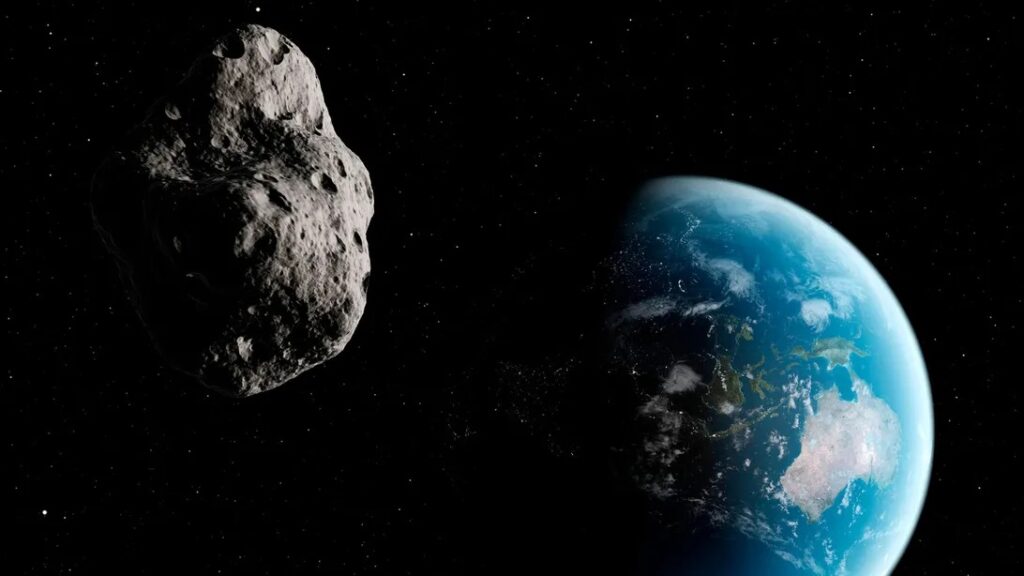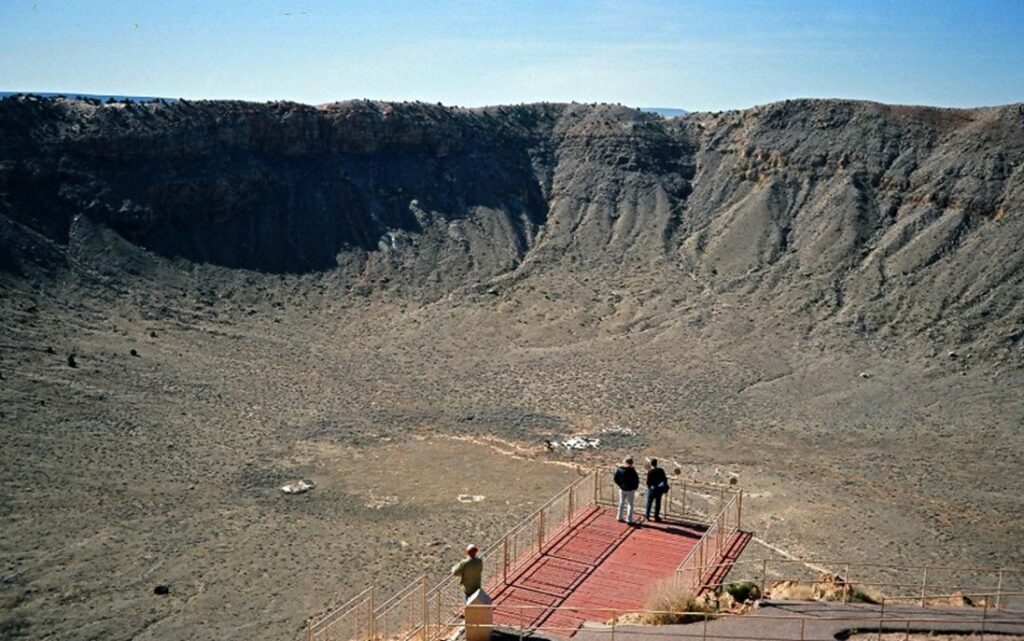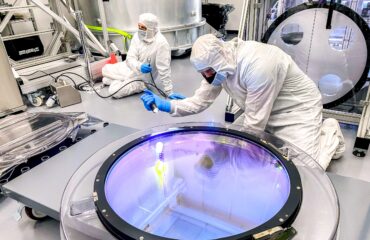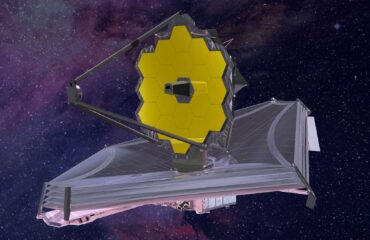
Asteroid approaching Earth – computer artwork. Image: Sebastian Kaulitzki.
As described in an earlier article in The Quantum Record, astronomers and governments have long been working to improve our ability to detect and deter Earth-bound asteroids.
Although our detection technology has been in place and advancing for some time, the deterrence capability is among the newest and most important breakthroughs in space science today.
In November 2022, a small asteroid was spotted as a fireball shooting across the sky over Ontario, striking Earth less than 100 kilometers from Canada’s largest city, Toronto, a metropolitan area of over 6 million people. The announcement of the early detection of this asteroid, named 2022 WJ1 by the Minor Planet Center, raised concerns among the space-watching community on the internet, as news became public that this was only the sixth time that astronomers had detected an asteroid before it struck our planet. However, within two days, the European Space Agency was able to reassure the public with a response on social media:

Locating these rocks in space before they encounter the friction of Earth’s atmosphere and turn into glowing hot meteors is a matter of size.
It’s estimated that asteroids like 2022 WJ1, which was about 1 meter wide, and 2022 EB5, a 2-meter-wide meteor detected in March, hit Earth about ten times per year. They are incredibly hard to detect because they are so small. Although they pose no major threat to human existence – they could not provoke species-level extinctions, like the one that killed the dinosaurs, for instance – we are getting increasingly better at detecting them and assessing their potential for impact and damage.
For instance, the Earth Impact Effects Program, developed by the Imperial College of London, provides an online calculator that allows anyone to estimate the energy released into the air and ground from such an event. The user only needs to insert parameters such as diameter, velocity, density and angle of impact, and the tool estimates the local consequences such as ground shaking, thermal effects and size of crater produced, among other things. Using certain assumptions for the asteroid that struck near Toronto, the calculator estimated the equivalent of 54 tons of TNT bursting in the air.
Larger asteroids, which often are kilometers-wide, are both easier to detect and much rarer to come by.
There are currently many international institutions monitoring and developing methods to detect every single space rock that could potentially become a threat to our life on Earth.
One such group is Asteroid Watch, a NASA-funded program of the Center for Near Earth Object Studies (CNEOS) at the Jet Propulsion Laboratory. According to their website, the program “accurately characterizes the orbits of all known near-Earth objects, predicts their close approaches with Earth, and makes comprehensive impact hazard assessments in support of the agency’s Planetary Defense Coordination Office at NASA Headquarters in Washington”.
The Asteroid Institute, a program of the B612 Foundation, is also working on asteroid detection. In May 2022, they announced a groundbreaking computational technique, the Asteroid Discovery Analysis and Mapping (ADAM), a platform that allows researchers to correlate observational data from multiple sources with the dynamics of asteroids to map asteroid orbits and trajectories. ADAM uses an algorithm called THOR (Tracklet-less Heliocentric Orbit Recovery), which links points of light in sky to images that are consistent with asteroid orbits, without the need for telescopes.
According to the Asteroid Institute Executive Director, Dr. Ed Lu, they “are using the power of massive computation to enable not only more discoveries from existing telescopes but also to find and track asteroids in historical images of the sky that had gone previously unnoticed because they were never intended for asteroid searches.”
Near-Earth objects are asteroids and comets with diameters ranging from a few meters to nearly 40 kilometers, orbiting within 195 million kilometers from the Sun – which means they are relatively close to us and should therefore be closely watched.
But, according to the ESA’s website, we should not be concerned – at least for the next hundred years or so – which could be a lot of time for one or two lifetimes, but is nothing compared to the age of our planet.
Asteroids and comets are objects orbiting the Sun, with the difference being that asteroids are made of rock, while comets are made of ice and dust. When a meteoroid, a small piece of an asteroid or a comet, burns up upon entering the Earth’s atmosphere, it becomes a meteor. And when a meteor hits the ground, shattering, the smaller pieces are called meteorites. The shooting stars we can sometimes see up in the night sky are actually meteors. (NASA).

Barringer Crater (Meteor Crater), in Arizona. Image: Mike Beauregard.
There are approximately 200 known asteroid-caused craters on Earth’s surface, which tell the story of how these collisions have shaped our planet.
The largest one ever discovered, the Vredefort crater in present-day South Africa, resulted from a 20-to-25-kilometer-wide asteroid that hit 2 billion years ago, according to a 2022 paper by Ph.D. student Natalie Allen. This was twice as big as the asteroid that struck near Chicxulub, Mexico and is believed to have ended the reign of the dinosaurs.
These incredibly large space rocks – especially those that could potentially end up in a trajectory toward us – are closely monitored by astronomers. Scientists can determine orbits computationally with increasing accuracy as more observations are made, managing to predict where these objects will be decades into the future.
Until recently, if we were to find a planet-killer coming our way, there was little we could do to defend ourselves. But this is not the case anymore. Just a few months ago, we saw the first-ever full-scale demonstration of humanity’s ability to prevent species-level catastrophic events due to asteroid collision.

NASA Illustration of the DART spacecraft on final approach to the Didymos binary asteroid system with the Italian LICIACube observing the impact. Image: Steve Jurvetson.
In October 2022, NASA confirmed that its Double Asteroid Redirection Test (DART) was successful at changing an asteroid’s motion in space. DART was targeted at Dimorphos, the 150-meter-wide moon of the asteroid Didymos and used the spacecraft to purposely alter the object’s orbit by collision. The spacecraft was launched from California on November 24, 2021, on a SpaceX Falcon 9 rocket, and the impact occurred nearly one year later, on September 26, 2022.
According to Steve Jurvetson, one of the founders of the B612 Foundation and a current SpaceX board member, “Once a meteor is on final approach to Earth, it is too late already (unlike the movie treatments). Instead, the challenge is to find future threats decades earlier, and nudge their velocity ever so slightly, so that their trajectory, integrated over years, misses Earth entirely.” In other words, this slow and methodical process may be less spectacular, but likely more effective, than fictional encounters we see in movies.
DART was planned to be Earth’s first planetary defence mission. In November 2021, Jurvetson expressed optimism about what could follow the success of DART: “If DART succeeds… NASA and other space agencies will team up to develop a fleet of planetary defence spacecraft that can intentionally redirect asteroids that threaten Earth, preventing catastrophic impacts like the one that likely wiped out 75% of species and virtually all non-avian dinosaurs around 66 million years ago.”
Now, with the success of the test mission, the DART team is excited about what’s to come.
In December 2022, they held a Press Conference to discuss ‘What Comes Next After DART’s Asteroid Impact?’. It seems that what is not coming is a planet killer, at least for the next generation or two, and thanks to our dedicated scientists, our planet is becoming safer from the potential impacts of asteroids and comets.



